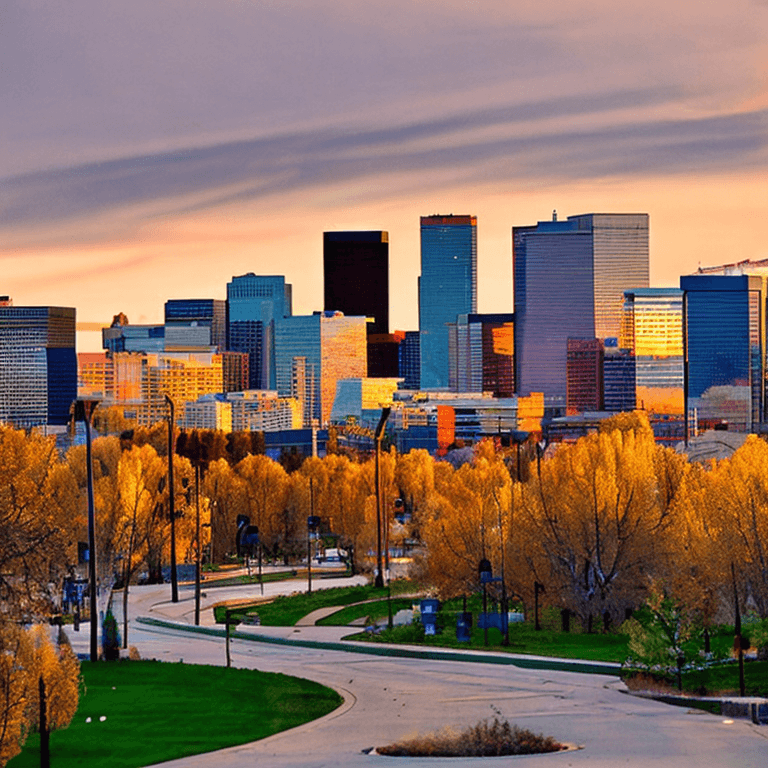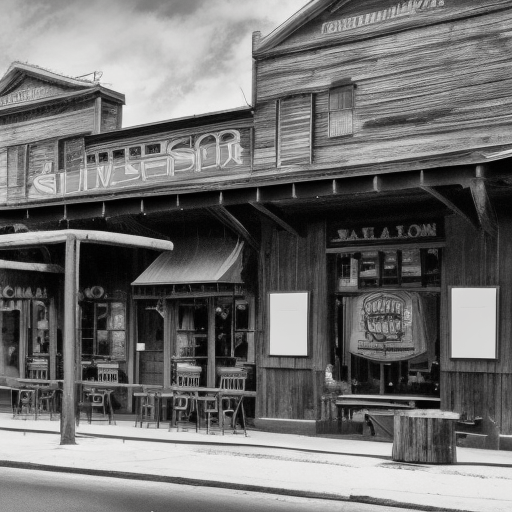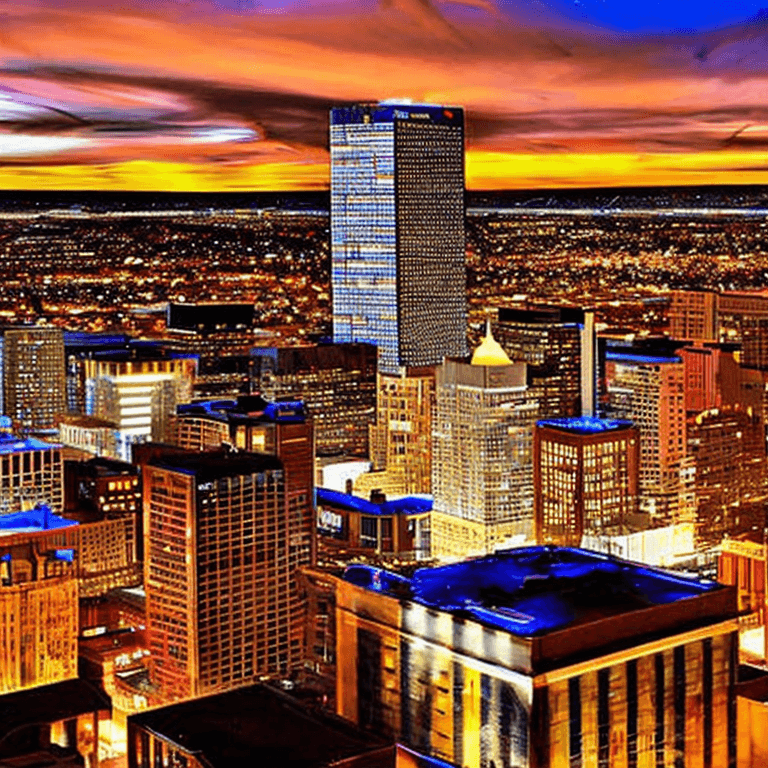The History of Denver
The history of Denver is filled with individuals and events that shaped the city. From the gold rush to the rebirth of Denver after oil.
Early Denver was a major crossroads at which people moved between the Rocky Mountains and Great Plains. Prehistoric archaeological evidence suggests that people from various cultures interacted and mixed here.
Gold Rush
The first gold boom in Denver The Gold Rush of 1849 was a significant historical event. Many people came to the city looking for fortune and a new beginning in their lives.
Clear Creek and Gilpin Counties were the first to find gold west of Denver. Numerous prospectors had success in this region, such as George Jackson of Idaho Springs and John Gregory of Cherry Creek.
These discoveries were not enough to revive the gold rush. A lot of publicity was required to entice new miners. William N. Byers, editor of Denver's very first newspaper Rocky Mountain News, launched campaigns to draw those who were looking for gold.
More than 100,000 men had left their homes in Kansas and Nebraska to cross the plains to the mountains of Colorado by the spring of 1859. These men were known as "Fifty-Niners."
Some searched for the gold in gulches such as Clear Creek or Gold Run in Boulder County. Others were more determined and sought buried gold in the mountains of Colorado.
The first major gold discovery was made in the region around Central City by John Gregory who was a Georgian. He was a slender red-haired cracker with an eye for gold in his home country.
Gregory was followed by many other prospectors who struck gold strikes in Clear Creek and Gold Run. Gold from the placer was discovered by those who continued to explore the mountains.
As a result of the gold rush, Colorado developed into a mining hub and a railroad-based city. The city grew rapidly, ultimately becoming the capital of the Territory of Colorado in 1881. Denver is a vibrant metropolis with a variety of parks, museums and attractions, as well as other attractions that celebrate its rich heritage.
Silver Rush
In the 19th century, the primary economic engine was silver and gold mining. It brought in more than $1 billion in revenue and produced many millionaires early, including Horace Tabor and Nathaniel Hill.
The frenzied rush began in 1849, when a group of California prospectors set off west to find their fortune. They found some gold near Arvada and later discovered placer gold (veins embedded in the rock) at Cherry Creek. These discoveries were only teasers, but they generated interest in a few Midwestern investors and Eastern investors, who quickly joined the fray and began exploring the area further.
The word spread and hundreds of thousands of people rushed to northeastern Colorado in search of their fortune. They had a variety of motives, such as wanting a fresh start or being involved in the conflict between North and South.
Some were motivated by the promise of riches, because of their exposure to promotional literature, such as Horace Greeley's "Go West Young Man." These men were also fueled by an insatiable need for adventure.
Whatever their motivations they all found their fortune in silver and gold mining. Combining the Bland-Allison Law of 1878 which required Congress to purchase 4.5 million ounces worth of Silver per month and the discovery of silver in 1890s, significantly increased the cost of silver, and also allowed the establishment of more mines throughout the state.
The economy plummeted after the silver boom, and many mining districts were unable to survive. Durango and Ouray in southwest Colorado were able to hold their own while others, such as Creede or Silverton in San Juan Mountains, floundered.
Culture Rush
Denver is a cultural crossroads. The city is home to some of the largest art institutions in the country, and is home to world-class museums that celebrate the past and the present.
A visit to the Denver Art Museum, for instance, is bound to impress, with a collection that spans prehistory through the 21st century. It is also located across the street from the Clyfford Museum which is home to the largest collection American abstract expressionist art.
As the culture rush continued, Denver began to transform its status from a frontier town to a modern and thriving city. A new train line connecting Denver to other cities and towns across the nation allowed this to happen.
The new route also brought more money to the city, leading to a rise in population growth. Denver was the third largest city in the United States at the start of World War II, with an estimated population of 322,000.
The US Mint was another factor that contributed to Denver's growth. It was founded in Denver in 1878. The mint is a popular tourist attraction and tours are offered daily.
It's a must to visit the Molly Brown House, the home of Denver's first woman mayor. The Victorian-style home that was restored in Victorian style, provides fascinating insights into Colorado's past and present.
Although the Gold Rush helped to shape Denver's image but it didn't come without its problems. Many of the women and men who left their homes in eastern America to pursue the riches of the west were not well-equipped for the journey. They frequently traveled in wagons and were at risk of dehydration, starvation and even death. These circumstances led to a the spread of fear and xenophobia which led to the formation of the Ku Klux Klan.
Oil Boom
The oil boom of 1849 ushered Denver City into a new age. It was a time when people came from all over the nation to work in oil fields. The boom resulted in a huge demand for housing, restaurants and hotels, water systems and more, all of which were needed to support the growing number of workers in the western part of Colorado.
To accommodate visitors and workers to accommodate workers and visitors, several towns were constructed in the region. Some towns were small, with little shops and restaurants and others were large oil towns, with restaurants, hotels and recreation facilities.
Gearhart was one of the most famous, and was located about half an hour from the Patterson well. The town had a number of businesses , including a general store and a grocery store and a barbershop/poolhall, machine shops and many other services.
Workers from other areas adored the town as it was affordable and easy to get to. It also featured the dance pavilion, where guests and laborers could dance.
While the boom was a positive time for certain, it also brought many difficulties to Denver and the surrounding communities. Certain families and towns were forced to leave their homes, while others would go bankrupt or find it difficult to meet their financial needs.
Many towns also had to deal with an influx of workers as people from other parts the country were attracted by the high pay and many opportunities for employment in western Colorado. Those who did not work in the mines had to find accommodation, improve wooden water lines to handle more flow, and provide meals in restaurants packed with tourists and workers who had just arrived.
The Denver-Julesburg Basin is among the most important oil shale plays in the world. While the oil industry is still an important part of the economy of the state, it's not the main driver. To drive economic growth, companies are looking at other sectors like finance and cleantech. Oil and gas production isn't likely to grow as quickly as it did when this law was passed.
Boom and Bust Cycle
The boom and bust cycle is a cyclical period of economic growth and decline that occurs often in capitalist societies of the present. Booms are when the economy is expanding, jobs are plentiful, and investors reap high returns on their investments. When the boom ends and the economy begins to shrink and people lose jobs and investors lose money.
The central bank lends money at low interest rates to both businesses and individuals during the boom. They can use the money to invest in houses, stocks in the technology sector, or companies and expect a high return.
Related: Denver Car Accident Attorney
Businesses begin to cut back on their spending after the economy slows and employees lose their jobs. During the downturn, business owners begin to sell their possessions, including stock portfolios and houses, in order to raise money to pay the payroll.
Colorado's history is marked by cycles of boom and bust. This includes the gold rush of 1849 and the Panic of 1893. However, Colorado's economy has changed and is no longer dependent as much on mining.
The energy boom made Denver an important metropolis in the 1980s, with its towering skyscrapers. The city was named the "Mile High City."
However, the frenzied construction sector proved to be one of the most significant destabilizers of Denver's economy. In the boom in energy, developers constructed a variety of projects because they had enough money.
This trend is returning in the current real estate boom, especially in the Front Range. This means it's possible that the Colorado economy will once more fall into the typical boom-and-bust cycle.
Denver, Colorado Car Accident Resources:


